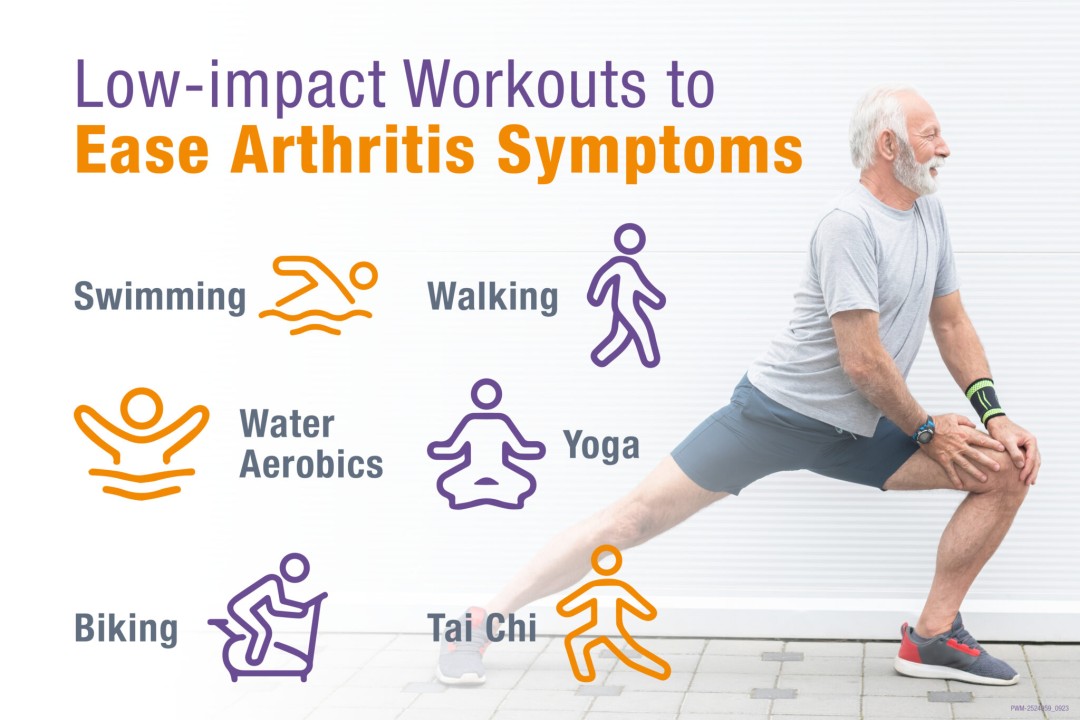As we age, staying active is essential for maintaining overall health and Joint health. However, choosing the right type of low-impact exercise becomes crucial to ensure safety and effectiveness. Low-impact exercises have become increasingly popular among seniors, and for good reason. Let's dive into why these low-impact workouts are so beneficial and how they can enhance your quality of life.
Joint-Friendly Choices
Low-impact exercises are particularly advantageous for seniors because they minimize joint stress while providing effective low-impact cardiovascular exercise and muscular benefits. Here’s a closer look at why specific low-impact activities are ideal:
Walking: Walking is an excellent choice for seniors due to its simplicity and accessibility. It requires no special equipment and can be done almost anywhere, from parks to shopping malls. The gentle motion of walking helps maintain joint mobility without the harsh impact that running or jumping might cause. Additionally, walking encourages better balance and coordination, which can help prevent falls—a common concern for older adults.
Cycling: On a stationary bike or a regular bicycle, cycling offers a low-impact cardio workout to enhance lower body strength and cardiovascular health. The circular motion of pedaling is smooth and less jarring than high-impact activities, reducing the risk of joint strain or injury and making it an ideal low-impact workout for seniors. Cycling also allows for adjustable resistance, so you can tailor the intensity to your comfort level, making it a versatile, low-intensity workout.
Swimming: Swimming is particularly beneficial for seniors because the water supports the body, significantly reducing the strain on the joints and minimizing the risk of injury. The buoyancy of water alleviates pressure on the joints, which is especially helpful for those with arthritis or joint pain. Moreover, swimming engages multiple muscle groups simultaneously, providing a full-body workout that enhances flexibility, strength, and cardiovascular endurance without excessive impact.
Benefits of Low-Impact Exercise
Engaging in low-impact exercises provides numerous health benefits, particularly for seniors. Here’s a more in-depth look at how these low-impact exercises support overall well-being:
Lower Injury Risk: Low-impact exercises involve smoother and less jarring movements than high-impact activities. This reduces the likelihood of injuries such as sprains, strains, and fractures. For instance, walking and swimming involve continuous, controlled motions that do not place sudden stress on the joints, making them ideal low-impact aerobic exercises. By avoiding abrupt or high-impact movements, seniors can, making them ideal low impact aerobic exercises with less risk of aggravating pre-existing conditions or causing new injuries.
Enhanced Cardiovascular Health: Low-impact exercises like cycling and swimming elevate the heart rate and improve lung capacity, which are crucial for low-impact cardiovascular exercise. The moderate, steady pace of these low-impact cardio exercises helps strengthen the heart and improve blood circulation without the risks associated with high-intensity workouts. Over time, regular participation in low-impact cardio workouts can lead to better heart health, reduced blood pressure, and improved endurance, all of which contribute to a healthier cardiovascular system.
Improved Quality of Life: Regular low-impact exercise has a positive impact on mental and emotional health. Activities such as walking, cycling, and swimming stimulate the release of endorphins, which are natural chemicals in the brain that elevate mood and reduce feelings of stress and anxiety. This can lead to a more positive outlook on life, improved sleep quality, and a greater sense of low-impact fitness. Additionally, engaging in low-impact physical activity provides a sense of accomplishment and boosts self-esteem, further enhancing emotional health.
Adaptability and Customization: One of the key benefits of low-impact exercises is their adaptability to various fitness levels and individual needs. Exercises like walking and cycling can be easily adjusted in terms of duration, intensity, and frequency to match personal low-impact fitness goals and abilities. For example, seniors can start with short, gentle walks and gradually increase the distance as they build stamina. Similarly, cycling sessions can be modified to suit different fitness levels, ensuring that individuals can progress at their own pace while minimizing the risk of overexertion.
Making the Most of Your Low-Impact Routine
To get started with low-impact exercises, consider these tips for creating a routine that fits your lifestyle:
Set Realistic Goals: Begin with achievable goals and gradually build up. Consistency is key to seeing benefits, whether it’s a daily walk or a weekly swim.
Choose Activities You Enjoy: Find low-impact exercises that you look forward to, as this will make it easier to stick with your routine. Explore different options to discover what you enjoy the most.
Listen to Your Body: How your body responds to different low-impact activities. If you experience any discomfort or pain, adjust your routine accordingly or consult a healthcare professional.
Stay Hydrated and Nourished: Proper hydration and nutrition support your low-impact exercise routine and overall health. Make sure to drink plenty of water and eat a balanced diet.
Supporting Your Journey with the Right Equipment
Consider using specialized equipment to make your low-impact exercise routine even more effective. For instance, the PhysioPedal by Nobol is designed to assist seniors in maintaining their health and mobility through low-impact exercise. It offers a comfortable and versatile way to stay active, whether you’re at home or on the go.
Ready to embrace the benefits of low-impact exercise? Explore more products and resources at nobol.com to find the perfect tools to support your low-impact fitness journey. By incorporating low-impact exercises into your daily routine, you can enjoy a healthier, more fulfilling life while minimizing stress on your joints. Stay active, stay healthy, and discover the joy of gentle, low-impact fitness!

